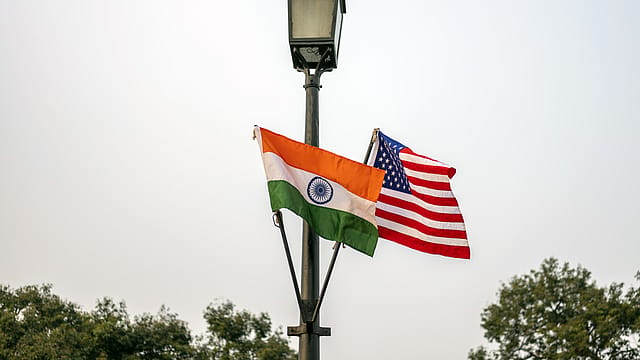Trump's 25% tariff will hurt; India-US FTA can cushion the impact
ADVERTISEMENT

The US has finally enforced the tariff threat it has been making against its trade partners for several months. India is among the countries that face the harshest treatment with almost all goods exports—except certain items on which specific tariffs were announced before and certain products in an exempted list—facing a 25% additional tariff. Key labour-intensive sectors like agriculture and textiles will bear the brunt of the additional tax burden as India’s major competitors in the U.S. market for some of these products are facing lesser tariff rates. A 20% tax on exports from Bangladesh is one such example. The new tax will be applicable on goods that are shipped from India from August 7 and those reaching US shores after October 5.
The executive order issued by US President Donald Trump on July 31 puts the majority of its trade partners in the 15% additional tariff bracket. Japan, Israel, New Zealand, South Korea, Nigeria etc are all in this category. While Bangladesh, Sri Lanka, Taiwan, and Vietnam face 20% tariff, it is 10% for countries like Brazil and the United Kingdom. Goods from countries such as Cambodia, Indonesia, Malaysia, Pakistan, Philippines, and Thailand will attract 19% tariff. China is not in the current list and the US will continue to levy an earlier announced 30% tariff on goods from that country.
How bad is this for Indian exporters?
It’s business as usual, at least for now, for the companies that are exporting products in the exempted categories. This includes manufacturers of finished pharmaceutical drugs, active pharmaceutical ingredients (APIs), and other key drug inputs, energy products such as crude oil, refined fuels, natural gas, coal, and electricity, critical minerals, and a wide range of electronics and semiconductors, including computers, tablets, smartphones, solid-state drives, flat panel displays, and integrated circuits.
January 2026
Netflix, which has been in India for a decade, has successfully struck a balance between high-class premium content and pricing that attracts a range of customers. Find out how the U.S. streaming giant evolved in India, plus an exclusive interview with CEO Ted Sarandos. Also read about the Best Investments for 2026, and how rising growth and easing inflation will come in handy for finance minister Nirmala Sitharaman as she prepares Budget 2026.
However, the impact on other goods could be substantial if the new tariff rates stay. Delhi-based trade think-tank, Global Trade Research Initiative (GTRI) estimates the new tariff structure to impact at least $25 billion worth of goods exports from India to the US. The impact could be more if the US imposes an additional ‘penalty’ also on Indian exports as a punishment for India’s continued cooperation with Russia, a country that is facing economic sanctions from the US due to its war with Ukraine. According to GTRI, even without a ‘penalty’, the 25% tariff alone could see India’s goods exports in FY26 could come down by 30% from $86.5 billion in FY25 to $60.6 billion in FY26.
However, India’s ongoing negotiations with the US for a bilateral Free Trade Agreement (FTA) could make a difference. The Executive Order issued by Trump acknowledges the ongoing negotiations the US is having with several countries (India is one such trading partner) and adds that “certain foreign trading partners have agreed to, or are on the verge of concluding, meaningful trade and security agreements with the United States”. The just-announced additional tariffs are subject to change on the basis of the outcome of such trade agreements.
India is hoping to conclude its negotiations with the US for an India-US Free Trade Agreement in the coming months. The additional tariffs have made that exercise more complex, but have not derailed it.
While the impact of US tariffs on Indian exports is real, it may not affect the growth story of the Indian economy in a big way as the country’s economy is largely domestic focused with domestic consumption, capital expenditure and services being its key growth drivers. Indian exports are also diversifying with the government identifying and promoting newer products and newer markets. Tariff can at most be a short to medium term shock, but not more.
